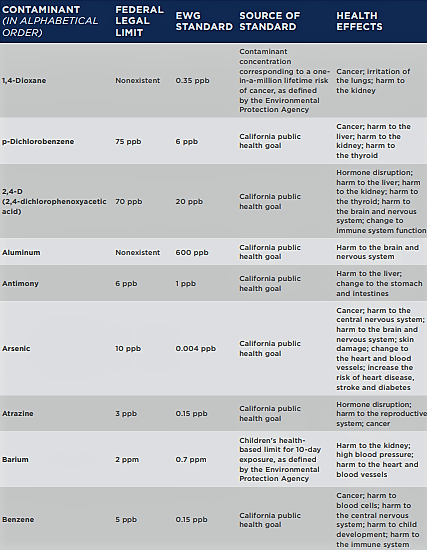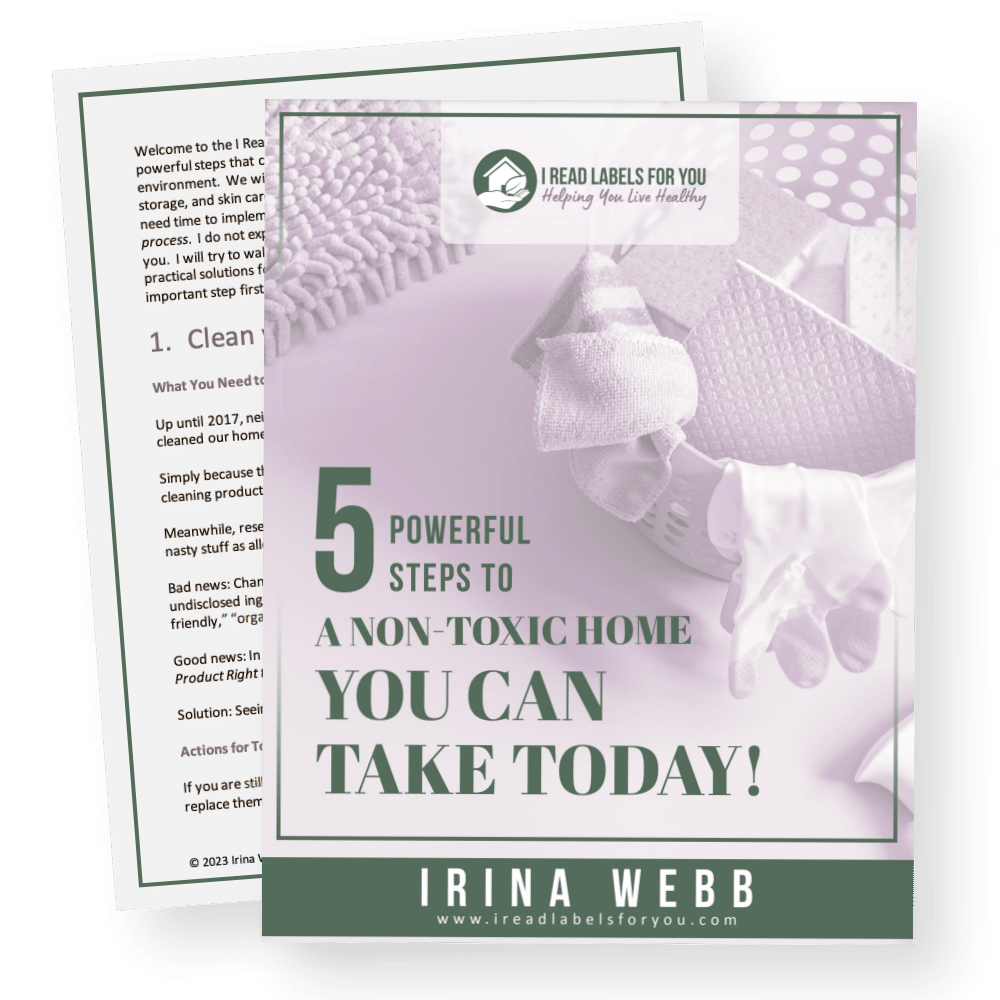What Is Filtered Water?

Who knew that the subject of drinking water would be so complex?! There are so many types of water out there that it becomes a little overwhelming to choose the healthiest kind. Indeed, there is tap water, pure water, alkaline water, distilled water, spring water, bottled water, mineral water, sparkling water – where does it end, right?
In this post, you will learn about filtered water. I hope it will help you, just as it’s helped me, to see that filtered water alone is healthy enough for you. In other words, you do not need to look for any other kind of water as long as filtered water is available to you. So, let’s discuss what filtered water is, why drinking filtered water is beneficial, and what types of filtering media are available to you at home. To learn if hard and soft water are okay to drink, visit my blog posts Is Hard Water Safe To Drink? and Is Soft Water Safe To Drink?.
What Is Filtered Water?
Essentially, filtered water is water from any of your water supplies that has undergone a filtration process to remove impurities and potentially harmful substances. One can also say, it is municipal tap water that you run through a filter to remove chlorine and other substances, thereby improving its taste. Ultimately, it is water that you filter by means of physical filtering media to reduce the range of contaminants based on your water quality report.
Bottom line, your “tap water” and your “filtered water” are not the same thing. To clarify, you take your tap water and apply a filtration method to it to get safe, filtered drinking water. Why is it important to understand this difference? Because, technically, you could say that your tap water arrives at your faucet already filtered, too. Indeed, filtration is one of the steps of the water purification process at your local water treatment plant:
- coagulation
- flocculation
- sedimentation
- filtration, and
- disinfection (source).
Although tap water undergoes filtration at the water treatment plant, it is not the “filtered water” I refer to when I call the water “filtered.” In my understanding, “filtered water” is what your tap water turns to after you use additional filtration systems at home.

Why Filter Tap Water
The reason you want to filter your tap water is to eliminate various contaminants, heavy metals, and chlorine (used for disinfection). Even though you see clean water running out of your faucet, there are many invisible parts to it that you don’t want to enter your body.
In the screenshot below, you can see some of the tap water contaminants and health guidelines as listed in the EWG Tap Water Database. This shows that these contaminants may potentially be present in your tap water.

Aluminum, antimony, arsenic, benzene – as I said, these are just some of the impurities potentially present in your tap water. There is also fluoride, and, in fact, we even had to deal with uranium in our water! You can learn more about that and how we handled it in my post about uranium in water.
Benefits Of Filtered Water
The primary goal of filtration is to enhance the quality, taste, and safety of the water intended for consumption, but there are some other positives, too. Thus, the benefits of filtered water include:
- improved taste and odor
- reduction of contaminants
- environmental protection
- convenience, and
- cost savings.
First, filtering water can significantly improve its taste and eliminate unpleasant odors caused by chlorine, sulfur, or other contaminants. Enjoying refreshing clean water can encourage increased hydration, leading to better overall health.
Second, filtration systems are designed to remove a wide range of impurities, including heavy metals, chlorine byproducts, pesticides, herbicides, industrial pollutants, and potentially harmful microorganisms. Hence, drinking filtered water helps reduce exposure to these substances and promotes safer consumption.
Third, opting for filtered water reduces reliance on single-use plastic bottles, contributing to a greener and more sustainable lifestyle. Invest in a reusable water bottle to help minimize plastic waste and its impact on the environment. (Learn more about water bottles here and about the harms of plastic here.)
Last, having a reliable source of filtered water at home eliminates the need to purchase bottled water regularly. This not only saves money but also provides the convenience of having pure water readily available whenever and wherever you need it.

How Is Water Filtered
At your local water treatment plant, water goes through the following steps:
- coagulation
- flocculation
- sedimentation
- filtration, and
- disinfection (source).
Simply put, coagulation and flocculation form heavy particles of dirt, and sedimentation separates solids from the water by making them settle to the bottom.
Afterwards, the clear water on top runs through filters to separate additional solids from the water. The filters have different pore sizes and use such types of filtering media as sand, gravel, and charcoal. This filtration process removes dust, chemicals, parasites, bacteria, and viruses. And activated carbon filters help with removing bad odors.
In addition, water treatment plants can use ultrafiltration when the water goes through a filter membrane with very small pores. As a result, only water and other small molecules (such as salts and tiny, charged molecules) get through. And to treat recycled (aka reused) or salt water, water treatment facilities often use reverse osmosis (RO) filtration systems.
Best Ways To Filter Water At Home
Generally speaking, all water filtration systems can be divided into two main categories:
- reverse osmosis and
- carbon filtration systems.
Note that it would be wrong to label any of these technologies as “best” or “better” than the other. Each one has its strengths and weaknesses. Therefore, your choice of a water filtration method and filtering technology should be determined by your water contaminants. One of the ways to know them is to check your water quality report (you can find it online). Another way is to test your water. Still another way is to turn to professional water experts. Such as Clean Water Revival, who will help you save time and money.
When I was looking for a filter for my home, I spent lots of time and money on finding the right one for me. In my post about top water filters, I discuss Berkey, Aquasana, and water filter pitchers. At present, I have a Pure Effect water filter installed in my kitchen.
Now that I’ve discovered Clean Water Revival (CWR), I consider using their assistance the most effective way to address your water issues. You can learn about them in my post dedicated to an easy solution for water filtration. But the bottom line is CWR will help you choose the right water filtration system for your situation and your type of water. Eventually, they will customize a water filter for you made with NSF certified media/parts.

Reverse Osmosis
On the one hand, the strength of reverse osmosis (RO) technology is that it is very powerful at reducing contaminants. On the other hand, however, it reduces not only harmful contaminants but also beneficial minerals such as calcium and magnesium. In other words, your water gets demineralized, which is not good because you need those minerals for health. However, if your water is polluted with substances that only RO filtration systems can reduce well, which are fluoride, chromium-6, radioactive elements, pharmaceuticals, PFAS, and arsenic, I would consider choosing an RO system.
In addition, RO water filtration systems are typically more expensive to buy and run. Thus, they require 3 units of water to produce 1 usable unit. So your water bill may be a little higher. Plus, an RO system has a water storage tank which is often lined with plastic. The good news is that most RO filtration systems have a carbon filtration media through which the water that sat in the tank passes before you drink it. Hence, the plastic lining of the tank should not be an issue. Also, the carbon media deals with volatile organic compounds (VOCs).
Carbon Filters
Unlike reverse osmosis filtration systems, carbon systems do not remove beneficial minerals from the water (e.g., magnesium and calcium). Nevertheless, while they effectively remove chlorine, volatile organic compounds (VOCs), certain heavy metals, and some common waterborne contaminants, they might not remove or sufficiently reduce all the contaminants you need to avoid (e.g., fluoride, chromium-6, radioactive elements, pharmaceuticals, PFAS, and arsenic).
The carbon media that can be used both in RO systems and carbon systems include:
- granular activated carbon (charcoal; filters with this media vary greatly in effectiveness)
- carbon block (granular activated carbon shaped into blocks under high pressure; more effective than granulated activated carbon because of larger surface area)
- catalytic carbon (changes the molecular structure of the harmful chemicals into their harmless building blocks, e.g., chlorine into chloride).
Other Types Of Filtering Media
Some other types of filtering media include:
- Activated alumina (reduces fluoride)
- Distillation (uses boiling, steaming, and cooling to rid the water of contaminants; distilled water is free of not only heavy metals but also of beneficial minerals)
- Ion exchange (uses electrically charged sodium ions to replace water contaminants with sodium)
- Kinetic degradation fluxion (KDF) (copper and zinc create a slight electrical charge to exchange ions with contaminants, which modifies their molecular structure; reduces lead, mercury, and chromium as well as chlorine, chloramine, and pesticides; does not remove fluoride or bacteria)
- Ultraviolet light (UV) (kills pathogens, viruses, and mold; good for well water).
Note that water alkalization is not a water purification process, and water alkalizing machines are not filtration systems. In fact, alkaline water may interfere with the naturally acidic stomach environment and result in indigestion, poor absorption of nutrients, and increased potential for getting sick from pathogenic bacteria. Learn more about alkaline water here.
Conclusion About Filtered Water
Filtered Water Is Your Tap Water Run Through A Filtration System To Enhance Its Quality And Taste And Remove Contaminants.
In sum, filtered water offers a multitude of benefits, from improved taste and odor to the removal of contaminants that may impact your health. Whether through carbon filters, reverse osmosis systems, or other filtration methods, choosing filtered water is a step towards a healthier and more enjoyable drinking experience.
Consider your specific needs and preferences when selecting a filtration system, and ensure it meets your local water quality requirements. By embracing filtered water as a part of your daily routine, you’re making a positive choice for your well-being. And by investing in a reusable water bottle and rejecting disposable plastic bottles, you help the environment as well.
Note: While filtered water can provide an enhanced drinking experience and remove common contaminants, it’s important to be aware of the specific water quality concerns in your area. For comprehensive water analysis and advice tailored to your circumstances, consult with local water authorities or professionals, such as Clean Water Revival that uses NSF certified filtering media/parts (get a discount code here).
Browse the “water filtration” section of my shop for safe water filtration recommendations, including a water filter pitcher. If you are into spring water, make sure to read my post Is Spring Water Safe To Drink?. Also, know that boiling water does not necessarily make it safe enough to drink.
Take advantage of the I Read Labels For You free blog posts and, if necessary, paid services to make your healthy journey more efficient and fun.

Download The Free Guide!
5 Powerful Steps To A Non-Toxic Home
Join our informed consumer community and get our free guide the “5 Powerful Steps To A Non-Toxic Home”.

 Written by
Written by 





Before commenting, please read our Comment Policy.